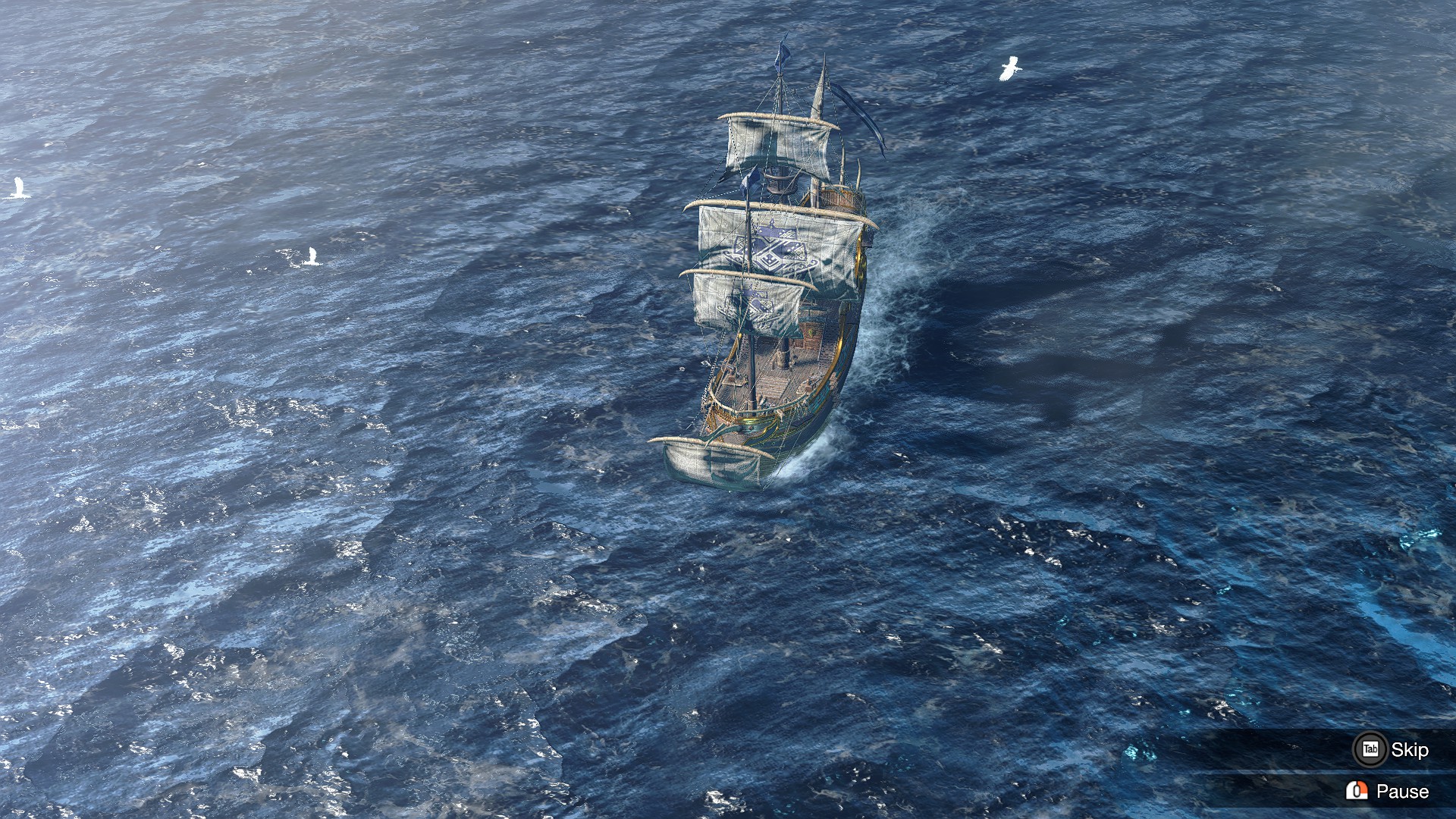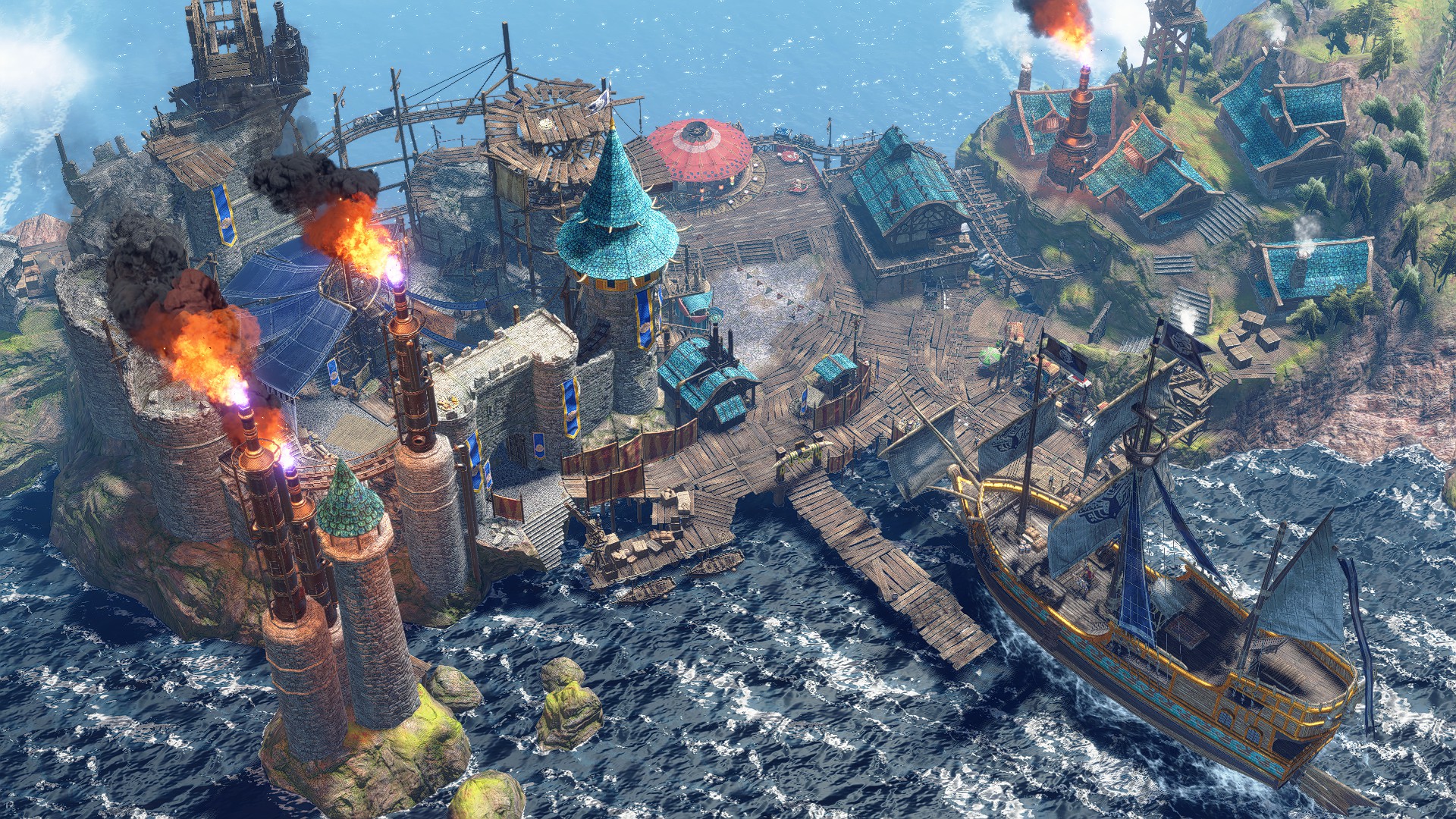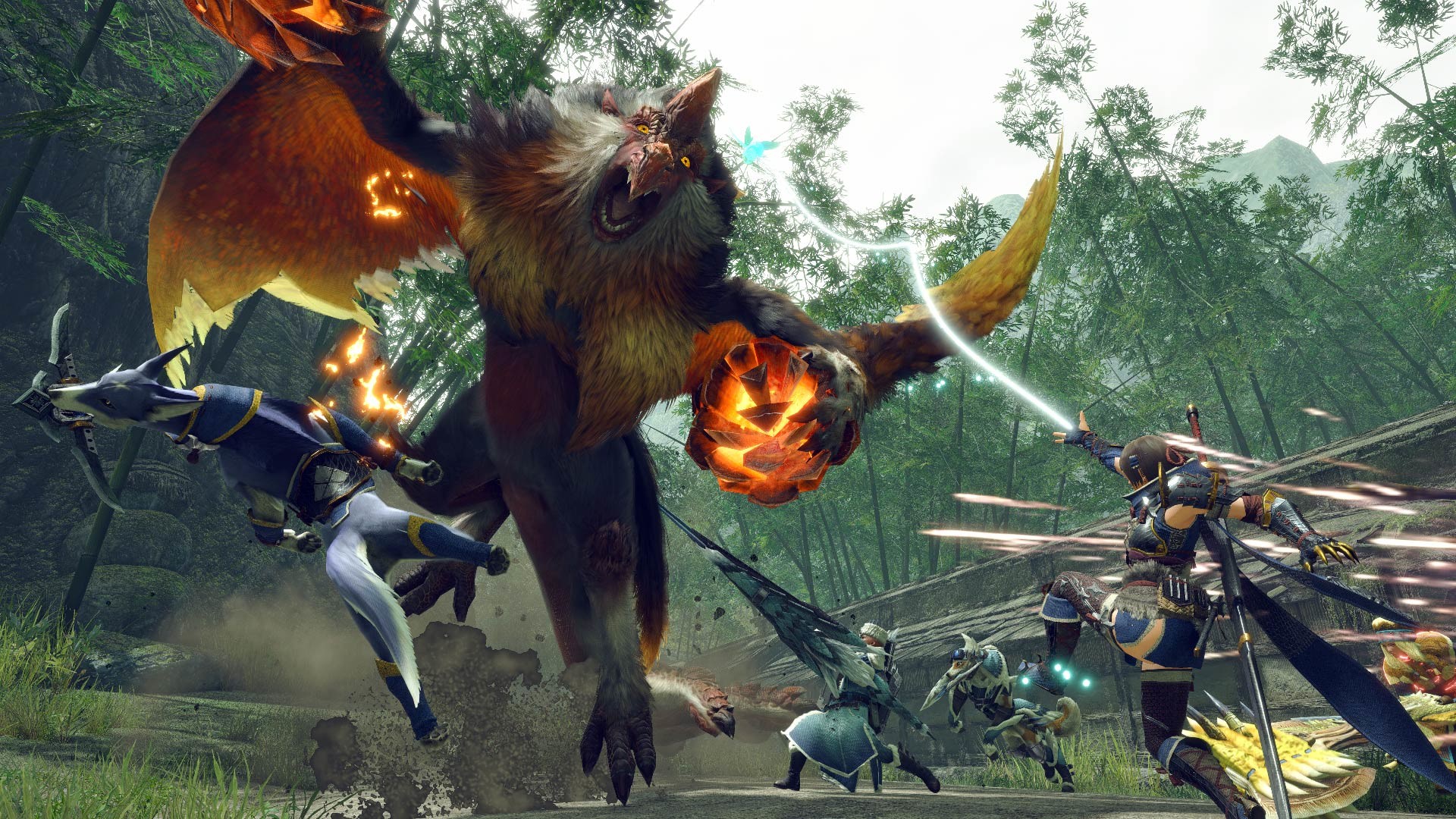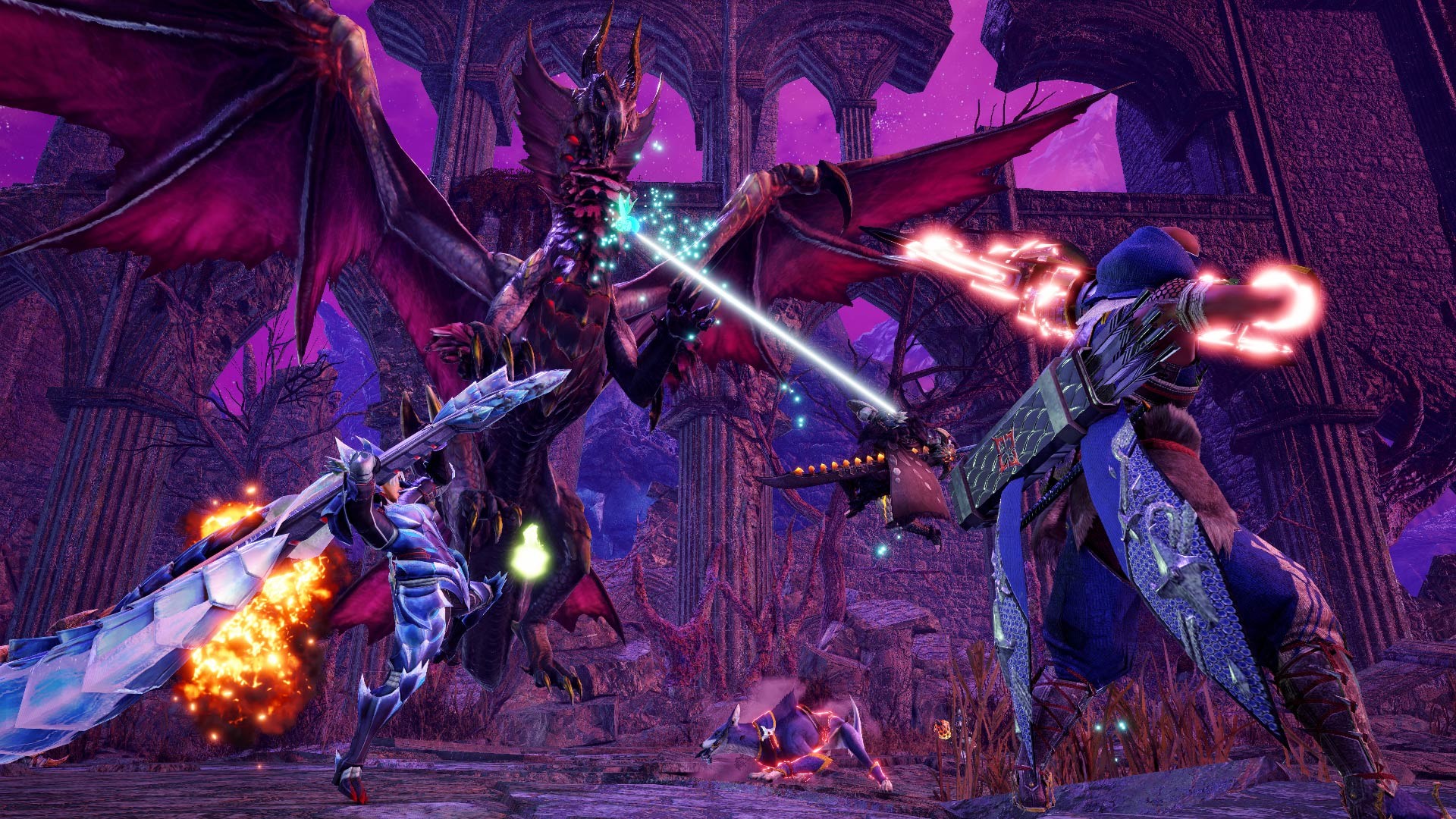Our Verdict
Monster Hunter Rise: Sunbreak is more of the same for Rise fans, which is great, but the lack of truly 'new' stuff is disappointing.
PC Gamer's got your back
What is it? You hunted the monsters in Rise, now they're back to hunt you.
Expect to pay £33/$40
Developer Capcom
Publisher Capcom
Reviewed on GeForce GTX 1070, 16GB RAM, i7-7700HQ
Multiplayer 4-player co-op
Link Official site
There are two sides to Monster Hunter Rise: Sunbreak. The first will see you out on a quest in a luscious jungle, gathering bugs and swatting away little monsters as you look for a snail: which you'll then take a picture of, and be rewarded with a very fetching snail hat. The other side of Sunbreak is your hunter, helpless on the ground as a furious red-eyed monkey beast stomps your keyster into the ground. Or perhaps it's a giant dragon with a rhino's horn, one-shotting you with charges (which inflict poison to boot).
Over and over and over again, you will watch hunters fall to the ground.
It's one of the cute aspects of Monster Hunter that, in a game built around brutal moves and nature red in tooth and claw, the hunters still 'faint' when a giant raging monster KO's them. Don't worry, everything will be fine. The real twist of the knife is the limited continues on each mission, such that 'carting' three times (you're taken back to base on a cat-propelled stretcher) means a restart. It is a strange thing in 2022 to have an old feeling—that sense you've just spaffed 40 minutes up the wall on a fight and, because you went for an extra hit or screwed up a dodge, have to do it all over again.
Monster Hunter Rise was first released on Switch in early 2021, and arrived on PC in January this year (here's our review). More in the lineage of the older portable titles than the all-singing all-dancing Monster Hunter World, Rise is absolutely crammed with weapons to try out, monsters to hunt, and loot to stuff away in boxes (and occasionally wear). It also greatly improved the player's movement, made area transitions seamless, and was a more gentle singleplayer experience than what had come before.

I wouldn't say Rise is an easy game by any means. But it is one that is meant for most players to be able to finish, with the real nasties saved until the post-campaign hunts (one of the things about Monster Hunter games is they tend to have multiple points you could call the end). It also stopped at 'High Rank' hunts, where the series would traditionally go onto 'G-Rank' and later 'Master Rank' hunts and the training wheels really came off.
Monster Hunter Rise Sunbreak is the paradisal addendum and cold-hearted corrective to Rise's more gentle on-boarding of players. This one is for the hardcore and goes for you more-or-less from the start.

Bite me
A full-price expansion frontloaded with fights against palette-swapped versions of older monsters is not as exciting as I was expecting.
The opening of Sunbreak does, however, leave much to be desired. Your introduction to the expansion is a variant of the Hermitaur, a crab-like enemy. While it's got some new moves and, hey, it's a new Rise fight, this is an extremely familiar monster and encounter.
Keep up to date with the most important stories and the best deals, as picked by the PC Gamer team.
It's a theme that continues for arguably longer than it should. Sunbreak quickly promotes your hunter to Master Rank, but you won't see a truly new monster until you're ready to go to Master Rank 3—which is a good dozen hours of hunting. To an extent this has always been the Monster Hunter endgame, and most longtime fans of the series won't bat an eyelid, but a full-price expansion frontloaded with fights against palette-swapped versions of older monsters with a few new moves… it's not as exciting as I was expecting.
One change introduced almost immediately is the 'switch skill swap', which essentially lets you take two different loadouts of switch skills (think: special moves) into battle. At first this is just a nice thing to have, and comes with a neat bespoke animation that can transition into a dodge. Later it becomes even more woven-in to the fabric of your hunting style, as you acquire buffs that activate when skill-switching, allowing you to go overkill on things like weapon sharpening and minimise downtime.
Skill-switching kind of stands for Sunbreak as a whole. This is a small change, but as you play more it becomes clear how much it improves the hunts. I main gunlance, and the switch skills are so different that I'm a bit set in my ways, but this adds a dynamism whereby you can now identify what might be really helpful against a given monster and deploy it. That's kind of what this expansion is about: perfecting an already great hunting experience.

Raaah!
Sunbreak only adds five truly 'new' monsters to Rise, and some of them, such as Espinas, have been in older games. Espinas is a good example of the kind of thing Sunbreak is really going for though. You won't come across this thing until Master Rank 4, at which point you should say goodbye to your mother and make sure all your worldly affairs are in order.
Espinas is like Diablos' bigger, meaner older brother. It's a giant dragon that adores charging at you, repeatedly, with huge wings that can catch lazy dodges and a horrible big horn that will without fail oneshot you. It doesn't have a fancy moveset, it just runs at you again and again until it catches you, which it will, and the secret sauce is that it also poisons you. That means, even if you get hit and somehow survive, you now have to cure poison and heal while this thing keeps dashing around like Usain Bolt. It frequently stuns. Espinas hates me, and I hate it.
Sunbreak holds back a lot of what it's got. You don't unlock the new switch skills until Master Rank 4, which is some chunk of time into the experience, and that's around when you'll start to see the newer monsters in action too. Capcom may not have brought quantity in this regard, but it did bring quality.
Five new monsters does feel stingy, but the later fights and Malzeno in particular deliver absolute fireworks. This elder dragon plays host to a swarm of vampire moths that can infest your hunter while he's flying around blasting fireballs, shattering the ground, and whipping up the elements around you. Oh and it can warp. Get that stretcher ready.
The elder dragons are my favourite fights in the series because Capcom's designers make it feel like the entire world around you is responding to their presence, and Malzeno truly feels like an awful force of nature. Its armour set is also unbelievably sweet, adding the 'Blood Rite' skill that lets you heal when hitting broken monster parts: yep, they got some Bloodborne in there.

Follow Me!
Monster Hunter Rise is as good as this series has ever been, and Sunbreak is much more of the same.
Faced with such fearsome odds, Sunbreak does offer one helping hand to the player, and it works so much better than I'd expected: Followers. You can usually go into a hunt with your animal companions, but Sunbreak introduces fellow hunters that will go into side-missions and one, knight Fiorayne, who joins you for major story quests.
Fiorayne is heaven-sent, and one of the best companions Capcom has introduced to the series, because she fights like another player; using lifepowder at the right moment, drawing the monster's attention for extended periods, disappearing to find another monster to drag back. Come to think of it, she's better than some human players I know. Fiorayne adds a whole new element to the series, and may indicate where Capcom will go in the future as regards the singleplayer side of the game.

Performance was excellent on a GTX 1070—bar consistent screen-tearing, which I also found was a problem with Rise when reviewing it. It held a smooth frame rate otherwise, with no performance issues. There's a considerable range of graphics options and even support for ultrawide displays.
This is not a visual spectacle, though, if you ask me, it looks great. Mid-level machines should be able to run it without breaking a sweat.
The new environments feel denser than those in vanilla Rise, though this may be a function of the expansion adding more small creatures and endemic elements like two new wirebugs. Both are mount-focused, one making the 'punisher' attacks more lethal and the other increasing the drop rates from monster fights. In keeping with that, it felt to me like the monsters are a lot more aggressive towards each other at Master Rank than they ever were in the base game, though that's just my sense.
Another aspect of Sunbreak that's locked-away until you start facing monsters like Malzenos is the sheer amount of stuff added in the way of secret armour sets, companions, master rank layered armour… things that seem like fluff but are so important for certain players. Suffice to say that if you're a fan of the traditional Monster Hunter endgame, this offers that customizability and min-maxing as well as the series ever has.
Monster Hunter Rise is as good as this series has ever been, and Sunbreak is much more of the same. It's also a lot tougher, but that feels like the right call. For some fans of the series, you could probably add a 10 onto the score. It does lack the thrill of the new, even if some of its additions are more significant than they first appear, and essentially functions as a proper endgame to an already expansive experience. Less a Sunbreak, then, than a sunset.
Monster Hunter Rise: Sunbreak is more of the same for Rise fans, which is great, but the lack of truly 'new' stuff is disappointing.

Rich is a games journalist with 15 years' experience, beginning his career on Edge magazine before working for a wide range of outlets, including Ars Technica, Eurogamer, GamesRadar+, Gamespot, the Guardian, IGN, the New Statesman, Polygon, and Vice. He was the editor of Kotaku UK, the UK arm of Kotaku, for three years before joining PC Gamer. He is the author of a Brief History of Video Games, a full history of the medium, which the Midwest Book Review described as "[a] must-read for serious minded game historians and curious video game connoisseurs alike."


